Learn how to make simple learning centers for all subject areas using items from the dollar store, basic manipulatives, classic board games, reproducible books, and more!
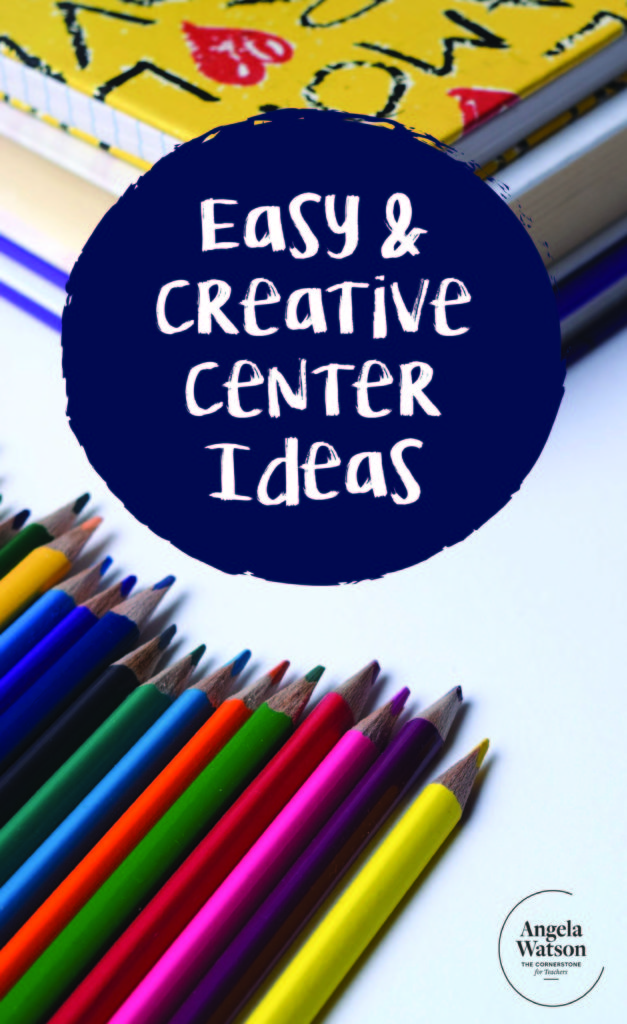
Turn dollar store items into inexpensive centers!
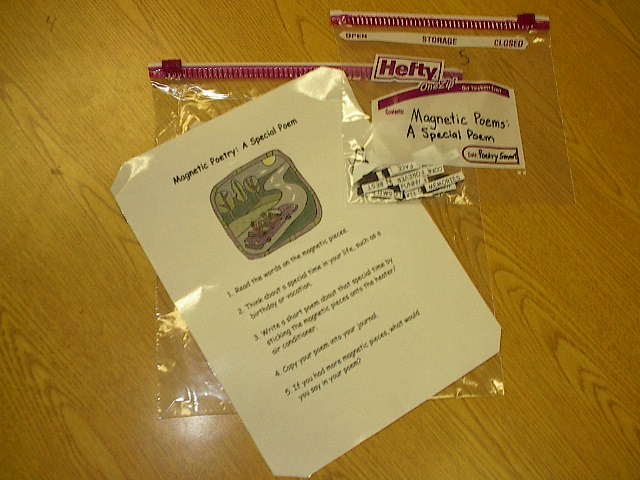
You can make an endless number of literacy and math centers using just dollar store finds! These are magnetic poetry words you can find at dollar stores and here on Amazon. Students use them to create a poem about a special time in their lives. They can put the magnets on heaters/air conditioners, filing cabinets, cookie trays, chalkboards, etc., then copy the poem in their journals. Magnetic words are also great practice for sentence structure and parts of speech: have kids create different ways to sort the words. You can use the same materials all year long and change the directions to reflect the skills you want to target.
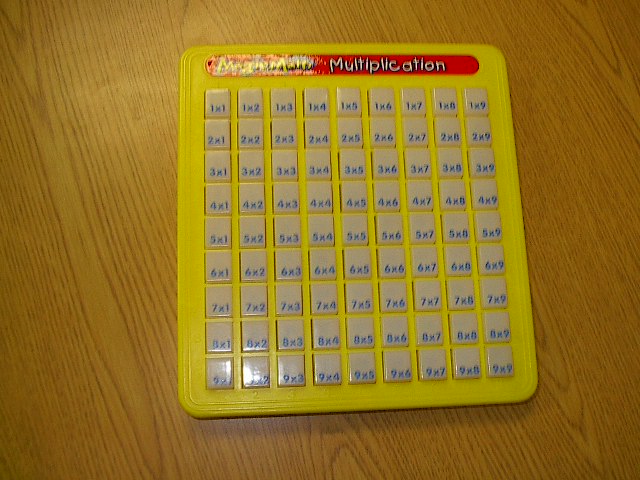
I’ve seen these games in dollar stores as well as toy stores and on Amazon, and they can be used to have students practice different math facts. This game is for multiplication–students press the clear button for each multiplication fact to reveal the answer. Interestingly, this center item was donated to the classroom by a student. Even in very high-poverty communities, I noticed there were always a handful of kids in the class who wanted to bring in materials for centers. I had kids send in all kinds of old books and games for our classroom even though I never asked for them!
Use simple manipulatives as center activities!
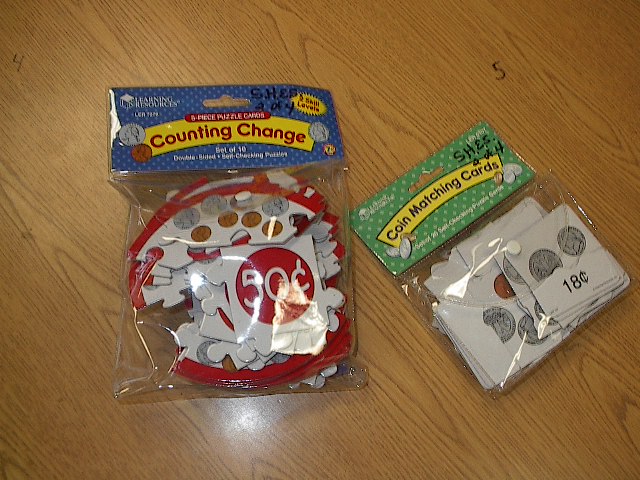
Whenever small stipends for classroom supplies became available (through bonuses for high standardized test scores or other allotments), I would purchase a few inexpensive manipulatives. I would often look through teacher supply store catalogs and write down what I liked, then search for the items on eBay or even through a search engine, which pulls up all online retailers. The items above were purchased for just a few dollars on Amazon.com and were the perfect way to have kids practice their skills in centers. Look for bargain center materials online, and thoroughly search your school’s supply closets. You would be amazed at the unused materials that are hiding around. Check with other teachers (not just those in your grade level) and see if they have any manipulatives or math games they’re not currently using. Your colleagues might even be willing to trade center materials with you for a few weeks. Teach your students how care for the materials properly, and this can be a great arrangement!
Use commercial board games and activities!
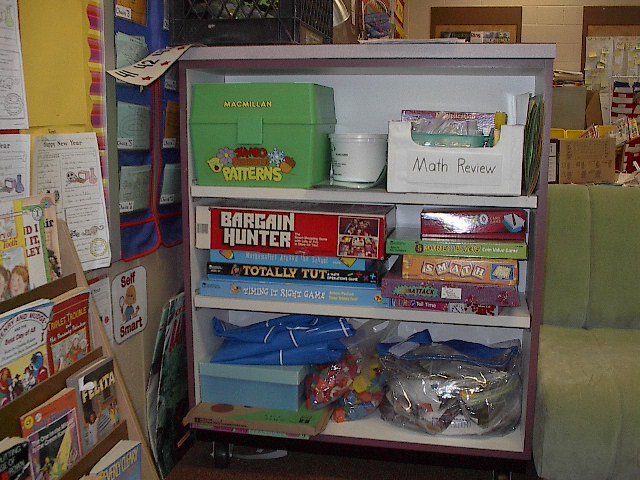
I have made lots of center materials from used lots of board games that I had from my childhood and found at yard sales. This photo shows where I stored the math activities I was not currently using in my centers, so you can get an idea of the different types of items I had. The green box holds games in plastic bags. The round plastic container (which used to hold kettle corn from the beach) contains miniature playing card sets from the dollar store that the students use to play whole class games of Battle. The Math Review box (which used to hold pasta in a Wal-Mart display–I took it and covered it in white paper) holds math bingo games and flashcards. Underneath are board games that were either designed to reinforce math skills, or contain altered rules I created to make them educational and appropriate for young children. (I also use Scrabble, Scrabble Junior, Go For Broke (no longer made), a version I made of Risk, and sometimes Monopoly. You can see Rack-O in the picture- that’s a cheap and wonderful game that provides number order/greater than/less than practice). On the bottom shelf is a big blue mat divided into squares- I’m not sure where it came from, but I use it as a Jeopardy board with clues written on sticky note. Random manipulatives are kept on the bottom, including dice, which are often used for whole class games, as well.
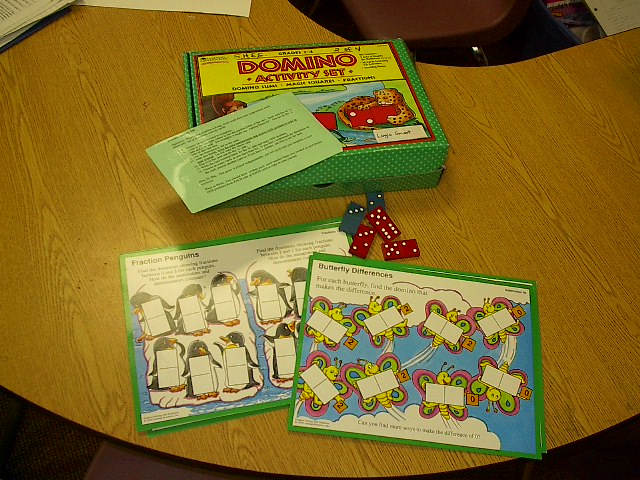
This is a dominoes game I used as a center. There are various addition and subtraction activities that using nothing but a cheap set of dominoes! I found this on Ebay.
Use reproducible books!
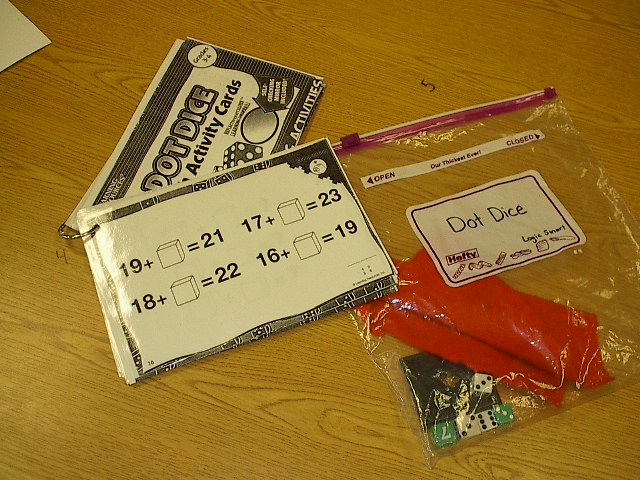
This is a set of games called Dot Dice from an old reproducible book. Students choose a task and roll the dice to complete various skill building activities. The answers are written backwards on each page, so a small compact mirror is provided for students to check their work. Wipe off pens and crayons are also included for writing on the pages and a felt square for erasing.
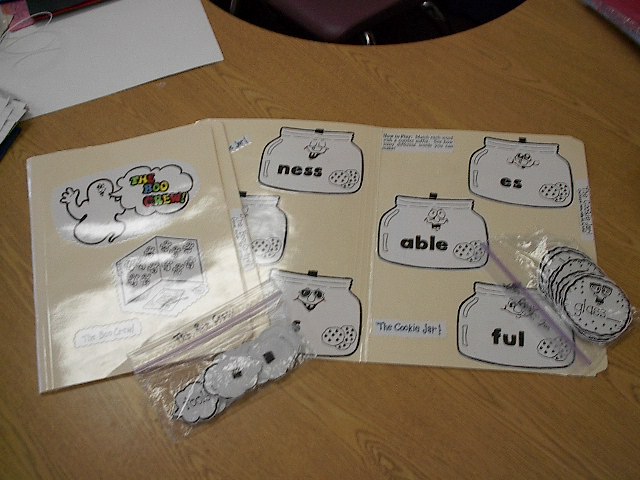
There are lots of reproducible file folder game books available. I bought this book on eBay, made photocopies of the activities I wanted, and then resold the book on eBay for the same price I bought it for. So essentially, the book was free, and I spend very little time making the centers because a parent volunteered to color and them cut out after I laminated them. (It can be very difficult to get parent volunteers in the classroom, but you would be surprised how many are willing to do things like this at home in their spare time–send out a survey at the beginning of the year to see who’s interested). I like to add velcro to file folder games to make the pieces stick, and also include a plastic baggie to keep the pieces together. The baggie sticks to the folder with velcro, as well, so it does not get lost. .
Keep your eyes peeled for materials–you never know WHERE you’ll find something good!
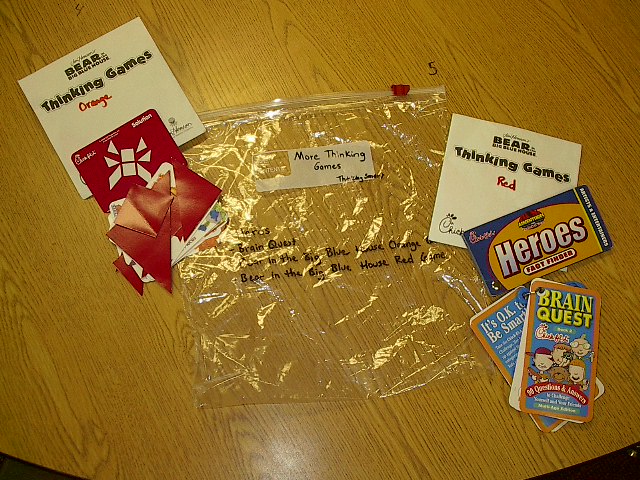
Believe it or not, these are free kid’s meal prizes from Chick-Fil-A! The company is run by a Christian conglomerate and always gives educational or character-building prizes in it’s kids’ meals. The Brain Quests are trivia questions; the Thinking Games involve geometry and visual-spatial skills.
Download FREE tips for simplifying your centers!
Are you overwhelmed by the idea of finding, making, and running literacy centers or math centers in your classroom? Centers don’t have to be complicated–you can learn how to create and manage learning centers quickly and easily. This item is a 13 page PDF excerpted from my eBook, The Cornerstone: Classroom Management That Makes Teaching More Effective, Efficient, and Enjoyable.
In just this single chapter (13 pages!), you’ll learn:
- How to decide if centers are the best use of your time (and your students’ time) by weighing the advantages and drawbacks
- Discover activities other than centers that students can do during reading group rotations
- Create a reading group rotation that makes teaching easier for you and more meaningful for your students
- Ensure that centers are serving your intended purpose and moving students toward learning goals
- Learn how centers can be used at different times during the school day (not just during your literacy block)
- Explore how mixed-ability center groups can help you differentiate for students’ individual needs
- Design a system for students to take centers back to their seats or use them in designated areas around the room
- Choose useful learning center materials and organize them well
- Create an easy system for determining who goes to each center at each time
- Determine how to assess center work and figure out if students are using their time wisely
- Introduce center routines and procedures to the class so that centers run smoothly
Download the chapter for FREE in my TeachersPayTeachers store!

Angela Watson
Founder and Writer
Sign up to get new Truth for Teachers articles in your inbox
Discussion
OR

Join our
community
of educators
If you are a teacher who is interested in contributing to the Truth for Teachers website, please click here for more information.
















would like more ideas and more creative ideas on learning centers for elementary school students
Sure, I have a bunch here: https://www.pinterest.com/angela_watson/center-ideas/
I need reading center activities for 6th and 7th graders. Do you have any suggestions? I’m going to use the magnetic letter idea.
Great site!
Thanks! I don’t know of anything offhand, but try checking TeachersPayTeachers!